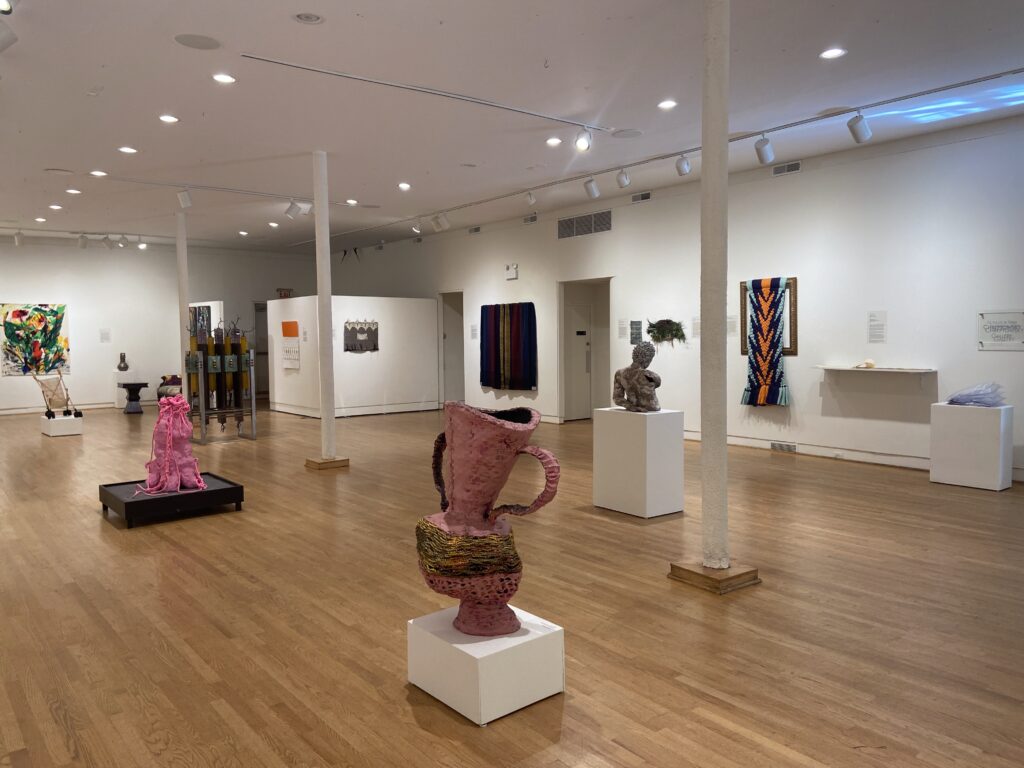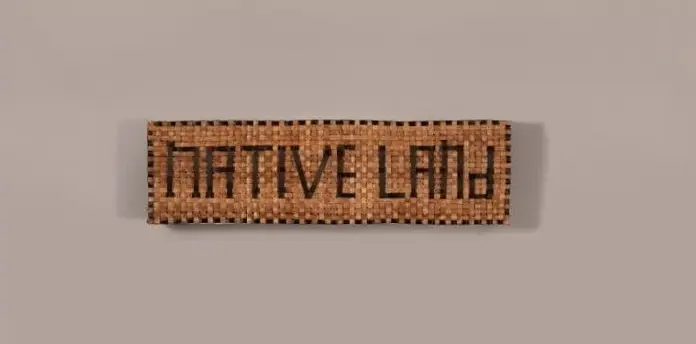Of Her Becoming: Elizabeth Catlett’s Legacy in Chicago is one of the many exhibitions open this summer as part of Art Design Chicago. Currently open at Arts + Public Life at the University of Chicago in the heart of Washington Park, this exhibition spotlights the work of Elizabeth Catlett and three contemporary Black women artists from the South Side. Works in the exhibition touch on topics surrounding the lived experience of Black women, activism, and more. Art Design Chicago sat down with curator Sheridan Tucker Anderson to better understand the history, impact, and legacy of Elizabeth Catlett.
Q1: What is Elizabeth Catlett’s impact on the history of art in Chicago?
Sheridan: “I think it varies. I initially worked on a Charles White exhibition that was at the Art Institute and that was in 2018. Charles White was her first husband and working so closely with Catlett, though I have studied her throughout my career and through undergrad, she was right there but the exhibition wasn’t about her.
And so, Charles White, a famous wonderful artist in his own right, gave me the idea or the need to focus on her specifically. It’s a full circle moment now that I get to focus on her. She was here in Chicago for just maybe two to three years. She would spend her summers here taking classes at the Art Institute in sculpture and interfacing with artists at Southside Community Arts Center. She was raising money for them; she was an artist-activist.
"Though her time in Chicago was really short,... it was the foundation for—if not her practice—then certainly for people that followed her, whether they were art historians or contemporary artists."

Though her time in Chicago is really short, I want to say it was the foundation for–– if not her practice–– then certainly for people that followed her, whether they were art historians or contemporary artists definitely. She’s always an artist that I’ve admired and once I could place her here in Chicago, I’m a native Chicagoan so I was like oh yeah, go for it!”
Q2: What was the most challenging and exciting part about curating this exhibition?
Sheridan: “I think as a curator there are lots of challenges and lots of exciting parts. It ebbs and flows. But initially, I had been thinking about Catlett as one does, and I was thinking about her here in Chicago but I kind of put the cart before the horse. I hadn’t necessarily studied that portion of her life, just knowing that it happened. She’s more well known for her time in Mexico, her time as a teacher. For her time really everywhere but Chicago.
The idea was exciting, but it also was challenging once I was like okay, I really have to do this and unpack this. I have to figure out what type of impact Chicago had on her practice or if it was any impact at all.
But in terms of downright challenging, it was probably borrowing work. Loans are always tricky and so I did my due diligence, reached out to all the people, contacts and colleagues depending on where institutions might be. It’s rarely a yes; it’s usually a no, but university museums, university galleries have more luck because their season is different, and their requirements are different.
That was challenging to figure out, like okay, I have this story down and these are things that I want to see. They weren’t specifically Chicago focused but I wanted to think about her practice overall. Trying to figure out how to get those pieces and tell the stories that I wanted to tell without them being in conversation with other artists–– I really wanted to focus in on her.
I wanted to focus on her print work specifically. She had a wonderful sculpting practice, but I didn’t want to focus on that for a number of reasons, one of them being this is a smaller space. I was just a little concerned about not only adding sculpture to the conversation and how that would change the exhibition but also logistically how it would function in the space. I had my heart set on the ‘Negro Woman’ series. I couldn’t find all the 15 prints but if I could find one, I would be good.”
Q3: Did you have your heart set on a specific piece that didn’t happen and did that change the narrative that you wanted to shape for this exhibition?
Sheridan: “That did happen, but it didn’t change the narrative. It changed the layout. I imagine most curators do this, but I can see it visually in my head before I find out where these pieces are. Do they exist in the world? Has anyone seen them in the last 20 years? Do people own them? So, I really did have my heart set on the ‘Negro Woman’ series. I had it laid out with all 15 on this wall specifically but I guess I didn’t remember or recall how tricky it is to pull a series together if it doesn’t exist at one institution and that one institution agrees to loan it to you. It’s iconic but it is also very rare so, it’s tricky to find those pieces.
I wasn’t deflated necessarily but I was like, I’ve got to pivot and I have to do it quickly. It was helpful to think about her practice overall because that helped me introduce the contemporary artists in a different way.”
Q4: The exhibition includes the work of three contemporary Black women artists from the South Side. How does their work reflect Catlett’s legacy?
Sheridan: “I hadn’t studied contemporary printmakers specifically. I am trained as a person who researches painting technically and then outside of painting I tend to do photography. Printmaking, while it’s not a new medium for me, I haven’t written specifically or hashed a show around it. But the contemporary artists I know to be printmakers in Chicago, specifically Krista Franklin and Angela Davis Fegan, they are just artists that I admire. I was lucky enough to be introduced to Rebel Betty which is now another artist I can add to my fangirl list.
They are all approaching print and working with paper in a different way. That was foundational to the way I thought about the exhibition because essentially TGP (Taller de Gráfica Popular), their approach and their ethos is foundational to how Catlett approached her practice as a printmaker but also the use of paper and how paper is not necessarily a precious material. That is something that is similar in all the women’s practice in this exhibition. Because it’s not a precious material, it is accessible in the way other things aren’t.
Back then, TGP (Taller de Gráfica Popular) is founded in 1937, that medium is meant for the masses. So, even though the contemporary artists are not necessarily making like Catlett was, they are thinking about what it means to be a woman printmaker in a field that is historically white and male. Also, what it means to work on paper, where that can take your practice, and how it can stretch your practice the way other mediums don’t lend itself to.”
Q5: How does Catlett’s work speak on social issues today?
Sheridan: “It’s certainly still relevant. It was wild putting this show up. These works range from early 1945 to 1990 something. Putting the work together and working with our preparator to unfurl the work, it’s like it could’ve been made today. It’s very present. It focuses a lot on what it means to be black and female in the world. It focuses a lot on what it means to not be of the one percent. Not have the means or the access to certain things that other people have.
"It's like [Catlett's work] could've been made today. It's very present. It focuses a lot on what it means to be black and female in the world."
There are other iterations of my career and things that I do as an independent curator that I wouldn’t do here but offering people ‘Hey, I like this artist and I hope you like her too’ is very exciting to me still. Working with Rebel Betty, she didn’t know about Elizabeth Catlett, so she went down the rabbit hole while we were working together and now she’s obsessed with Elizabeth Catlett. In the back of her paintings, she’s plastered Catlett’s FBI file.
In the catalog that accompanies this exhibition, I’m going to unpack the FBI files. How that informed her practice and how that informed her having dual citizenship. And that is completely relevant to talk about right now. What does it mean to belong to a place or not belong to a place? Whatever people can take away from this exhibition, if it’s something small like ‘I didn’t know about this artist. Let me learn more about them’ or ‘Let me see if I can FOIA her FBI file.’ I’m happy either way.”
Plan your visit to see Of Her Becoming: Elizabeth Catlett’s Legacy in Chicago at Arts + Public Life. Now open through August 31, 2024.










